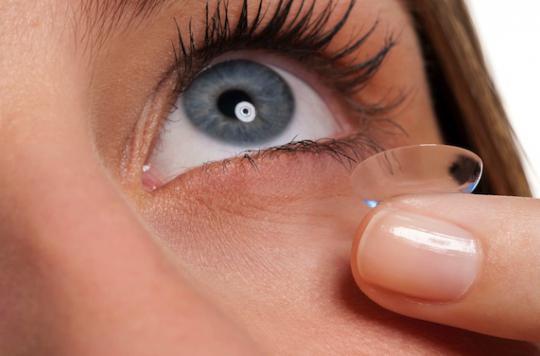On the surface of the eye of contact lens wearers, bacteria look more like those found on the skin than those naturally colonizing the conjunctiva.

Contact lens wearers are well aware that this alternative to glasses promotes eye infections. Until today, the poor hygiene of contact lens wearers was singled out. But a new American study suggests another explanation: contact lenses modify the microbial environment of the eye.
To conduct their work, researchers at Langone Medical Center in New York City compared 9 lens wearers to 11 non-users. The team then observed that the bacterial diversity in the eyes of contact lens wearers was significantly greater. A microbial environment that is usually found on the skin, especially the eyelid. For Jack Dodick, professor of ophthalmology and co-author of the study, “these results suggest that the pathogens appear to originate from the skin, so special attention should be directed to the eyelid and hand hygiene to decrease the ‘impact of this serious problem’.
A device that is not trivial
“Our work clearly shows that placing a foreign body, such as a contact lens, on the eye is not trivial,” says Maria Gloria Dominguez-Bello, microbiologist at Langone Medical Center in New York and one of the authors of the study presented this weekend at the Annual Congress of the American Society for Microbiology held this year in New Orleans (United States).
The team also made a surprising discovery: one of the bacteria involved in eye infections (Staphylococcus) was found in the eyes of volunteers not wearing contact lenses. An observation that the researchers do not explain.
“We hope that our next experiments will serve to show whether these changes are either due to the fingers that touch the eye or to the lens which affects and alters the immune system, and which bacteria are eliminated or which proliferate”, explains the researcher. .
.















